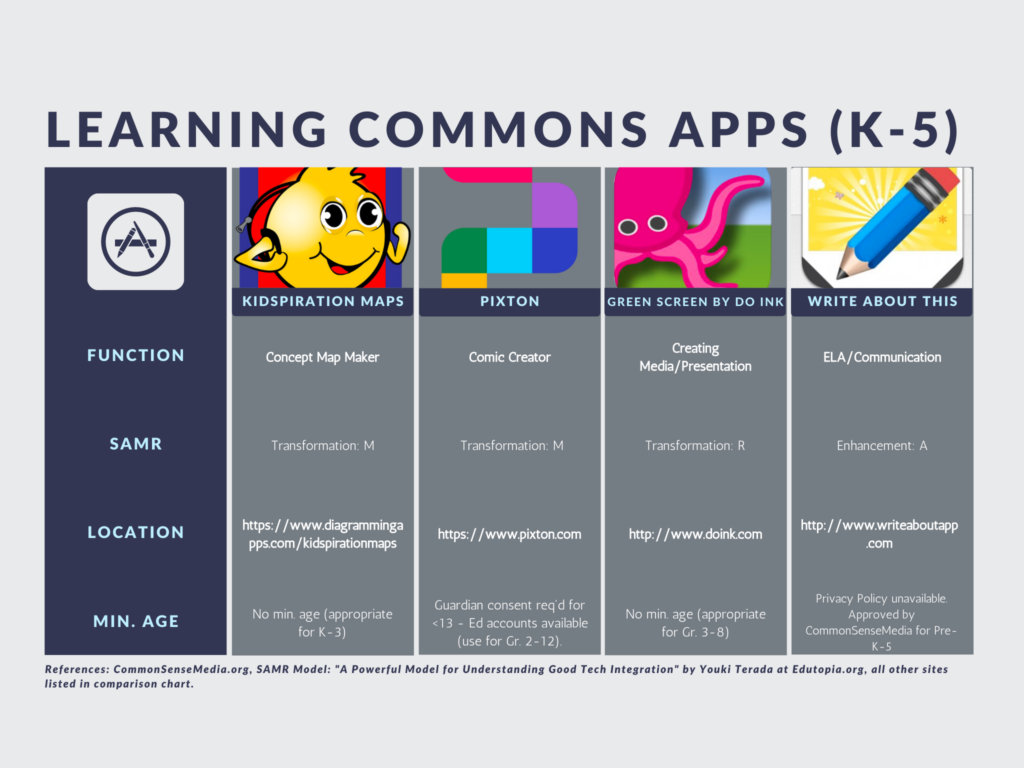There are so many apps on the market today, it’s tricky to know which one to use. As educators, we must be aware of the FIPPA guidelines to protect student privacy, SAMR model to ensure the tech is enhancing or transforming learning in a meaningful way, and the TPACK model to ensure the tech is being integrated into the pedagogy and content of a lesson as a relevant educational tool.
So much to think of!
Not sure what all you have to consider? Kathy Schrock to the rescue! Kathy has created an app evaluation tool for iPad apps that are content-based and intended for creation.
I’m sure you’ve noticed that some apps come and go as quickly as rain on an April evening. Thankfully, Annette Lamb, Ph.D, a Senior Lecturer in the department of Library and Information Science at IUPUI, has compiled a list of time-tested apps here (see also the PDF link below).
And, just in case you’re in a real pinch, I’ve done some evaluation and have pre-approved 4 apps for your LLC:

References:
Lamb, A. (2017, 06). What’s in your pocket? A decade of interactive online tools for school libraries. Teacher Librarian, 44, 56-60,63. Retrieved from https://www-proquest-com.proxy.queensu.ca/magazines/whats-your-pocket-decade-interactive-online-tools/docview/1925376490/se-2?accountid=6180
Schrock, K. (2011-2015). CRITICAL EVALUATION OF A CONTENT-BASED IPAD/IPOD APP. Accessed 8 Aug, 2021 from: http://www.schrockguide.net/uploads/3/9/2/2/392267/evalipad_content.pdf
Schrock, K. (2011-2015). CRITICAL EVALUATION OF A CREATION IPAD/IPOD APP. Accessed 8 Aug, 2021 from: http://www.schrockguide.net/uploads/3/9/2/2/392267/evalipad_creation.pdf
Recent Comments